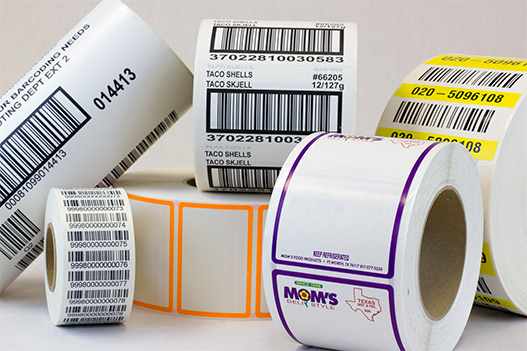Thermal labels are a popular choice in the printing industry for all the right reasons! They are incredibly easy to use, cost-effective, and practical. However, most people have often asked if these printing gems are waterproof. The answer is several sentences below!
What are Thermal Labels?
For the sake of clarity, thermal labels are a type of labeling solution that uses heat-responsive materials to produce images and other prints. They eliminate the need for ink, toners, and ribbons. Thermal labels are commonly used in various industries for printing product labels, barcodes, shipping labels, receipts, and etcetera.
There are two major types of thermal labels; direct thermal and thermal transfer labels. While both labels utilize heat-sensitive coatings to produce images or texts when exposed to heat, they feature slight differences in durability and resistance to environmental factors such as moisture.
Direct Thermal Labels: These types of labels are more prone to moisture, such as water and other types of liquids. The coating used in the manufacturing of these labels darkens when subjected to heat. Thus, they are susceptible to smudging and fading when exposed to moisture. Ultimately, direct thermal label’s are anything but waterproof! So you can’t use them for applications where water or moisture are involved to prevent illegible prints.
Thermal Transfer Labels: These labels, on the other hand, feature better moisture resistance compared to its counterpart. During the printing process, a thermal transfer ribbon transfers the ink onto the label surface. As such, the ink is incorporated into the label material, producing a more resistant and waterproof print. Though thermal transfer labels are not wholly moisture-resistant, they can better withstand light splashes, mild humidity and other moderate environmental factors.
How to Build Water Resistance for Your Thermal Labels
Below are additional protective measures you can take to shield your labels from water damage :
- Use Waterproofing Sprays and Sealants
There are dedicated waterproofing sprays and sealants compatible with thermal label’s and applications. These products provide an extra layer of protection against water and liquids by creating a water-resistant coating over the labels.
- Employ Protective Sleeves or Pouches
If your application requires thermal label’s but involves moisture, you can use protective sleeves or pouches to shield the label’s from damage. This approach is convenient when you need to remove or replace the labels consistently.
- Try Over-laminating
Applying a clear over-laminate film over your thermal label can strengthen their water resistance. The over-laminate serves as a protective barrier against water, oil, UV rays and physical force. This option is more feasible for thermal transfer label’s, but it also provides some level of protection for direct thermal label’s.
- Consider Synthetic Materials
If you can’t avoid water when using thermal label’s, opt for synthetic materials like the Polyester Labels from CDM Labels. These materials are naturally more water-resistant and deliver a long-lasting solution for moisture-based applications and outdoor conditions.
The bottom line
The waterproofing ability of thermal label depends on the type of label you choose. Direct thermal label’s are not waterproof and are not recommended for water-based applications. On the other hand, thermal transfer label’s offer better water resistance. If your application demands waterproofing, adopt the abovementioned waterproofing measures for best results.

